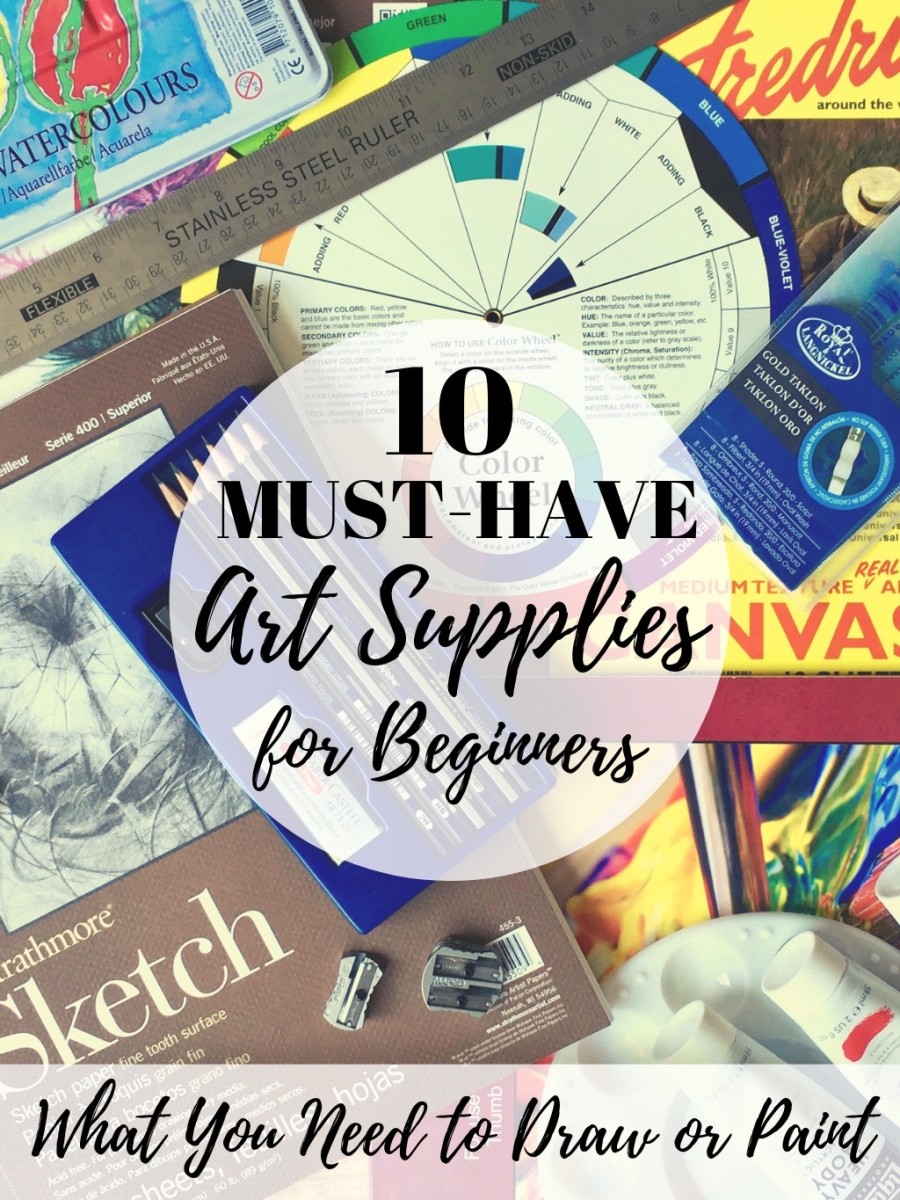How to Save Money as an Artist: 6 Ways to Cut Down Cost

Introduction
As artists, we all know the term "starving artist" all too well. Art supplies are not cheap, and it seems we have to put in a lot of time to sell a piece. Time that is unpredictable. An artist can have one painting for several years before it finally sells. The art market is harsh; therefore, artists need to be even more careful with their money than the average person. If you follow these tips, you will struggle less and maybe even become a successful artist more quickly.
1. Only Buy What you Need
When you are first starting out, you do not need every color of paint or every kind of brush there is out there. I started painting with only a 6 pack of Liquitex paint that included the colors:red, blue, yellow, green, black, and white. Those are all the colors you need to start painting now. If you need a different shade, start mixing them! Do not let yourself go broke; you can buy more paint and brushes later on.
2. Use Coupons and Sales
This is kind of an obvious one, but it really does help a lot. Stores like Micheal's and Hobby Lobby have great sales and coupons every week. I would recommend using an app like RetailMeNot to look for coupons and sales whenever you need more supplies. You should also check your email because not all coupons show up on the app.
Bonus Tip: Remember what I said in #1 about buying more supplies later? Well you can do so with coupons. After I bought the 6 pack of Liquitex paint, I would go to Michael's once a week and use a 40% off coupon on a new tube of paint. The normally $10 tube of paint was then reduced to $6. While I probably could have saved more if I bought a big set all at once, I just did not have the money for such a big purchase. This may be a good option for you as well.
3. Quality Over Quantity
This kind of goes along with #1. While you should only buy what you need, you also need to make sure that what you buy is worth it. Invest in high quality supplies. You do not need a ton of brushes, paint, etc. But you do need good supplies.
I made the mistake of using really cheap paint and brushes. Before I bought the Liquitex set, I was using a brand called Studio71. While these paints are not horrible, they did hinder me a bit from advancing my painting skills. These paints only cost $4 a tube that was twice as big as the Liquitex paints. However, I used three times as much paint with Studio71 compared to Liquitex, so in a sense I was actually losing more money. In addition to using poor paint, I was also using brushes from Walmart. Brand new, such brushes are great, but it doesn't take long for the bristles to start wearing down and even falling out of the brush. So instead of buying lots of cheap brushes that will only last a few months at best, buy high quality brushes that will last for as long as you take care of them.
4. Buy Used Art Supplies
There are tons of artists out there selling their used art supplies. Perhaps they switched mediums or maybe they just lost the time for it. For whatever reason, they are looking for someone to take those supplies off their hands. Ebay often has a plethora of used art supplies to choose from; I've sold different supplies there myself. You can also search on Facebook Marketplace to find used supplies near you. If you still can't find what you are looking for, you can also join artist groups that buy and sell used art supplies.
5. Use Up-cycled Materials to Paint On
Canvases can be expensive; especially when you are first starting out. Look for alternative surfaces to paint on that are more cost effective (or even free!).
When I first started painting, I found scrap wood that people were throwing away. I simply sanded them down and cut them to the size I wanted. I've also painted watercolor paintings on music sheet.
Be creative! There's so many things that you could use as a make-shift canvas that will save you a lot of money.

6. Reuse Shipping Supplies
If you sell your art online, you should save every single: box, tissue paper, bubble wrap, etc. that you ever receive. Shipping supplies can be expensive; especially boxes. So hoard all the supplies you could possibly reuse! Besides, it is better for the environment!
Bonus Tip: If you need to ship a large piece, you may be able to find free boxes at retail stores. I work part-time at a gift shop, and anytime I need a big box I know where to look.
In Summary
Being an artist can be a financially daunting experience. But if you follow these steps by: only buying what you need, always use coupons, buy quality not quantity, and reuse supplies; then your art and your wallet will suffer much less on your road to becoming a successful artist.
Do you have any money saving tips for artists? Tell us in the comments below!
This article is accurate and true to the best of the author’s knowledge. Content is for informational or entertainment purposes only and does not substitute for personal counsel or professional advice in business, financial, legal, or technical matters.








